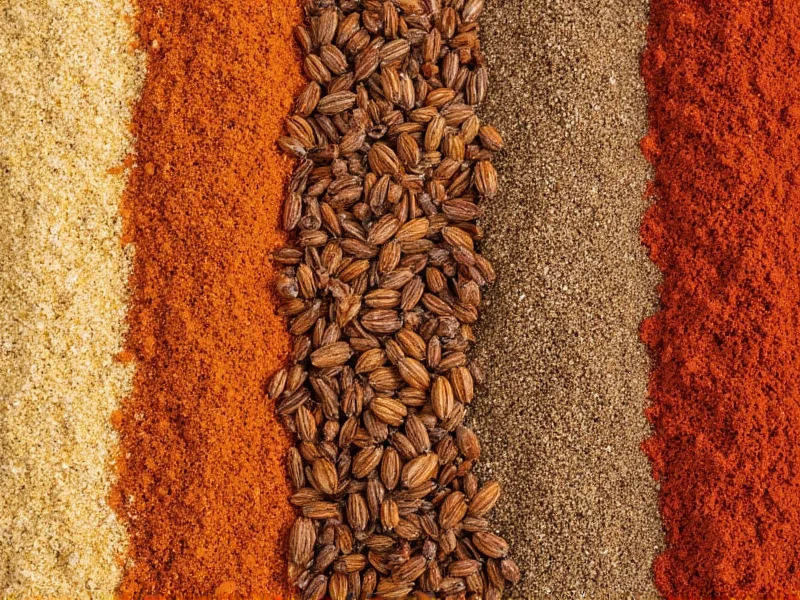Many home cooks encounter confusion when recipes mention a "brown spice" without specifying which one. This ambiguity can lead to culinary mishaps, as brown-colored spices vary dramatically in flavor intensity and application. The term refers to visual appearance rather than a specific botanical classification. Proper identification matters because substituting one brown spice for another can significantly alter your dish's flavor profile.
Understanding Brown Spice Varieties
Spice color often correlates with processing methods, origin, and chemical composition. Brown hues typically develop through drying, roasting, or natural maturation processes. Unlike vibrant red paprika or yellow turmeric, brown spices generally indicate earthier, warmer flavor profiles suitable for both sweet and savory applications. Recognizing these spices by color alone isn't sufficient - their aroma, texture, and flavor characteristics provide crucial identification clues.
Common Brown Spices and Their Characteristics
Below is a comprehensive reference of spices that commonly appear brown in their dried, ground form. This list addresses frequent queries about identifying brown spices in your pantry and understanding their culinary applications of brown-colored seasonings.
| Spice Name | Color Description | Flavor Profile | Common Culinary Uses |
|---|---|---|---|
| Cinnamon (Ceylon & Cassia) | Light to medium brown powder or rolled quills | Warm, sweet, woody with citrus notes | Baking, chai tea, Moroccan tagines, apple dishes |
| Nutmeg | Light brown powder; whole nut is deep brown | Warm, nutty, slightly sweet with peppery notes | Bechamel sauce, mashed potatoes, baked goods, eggnog |
| Allspice | Medium brown powder; whole berries dark brown | Complex blend resembling cinnamon, nutmeg, cloves | Jamaican jerk seasoning, pickling, meat rubs, mulled wine |
| Cloves | Deep brown whole buds; powder medium brown | Intensely aromatic, sweet, pungent, slightly bitter | Pumpkin pie, ham glazes, chai, rice pudding, mulled cider |
| Cardamom (Black) | Dark brown pods; powder medium brown | Smoky, camphorous, earthy compared to green variety | Nordic baking, Indian garam masala, meat stews |
| Mace | Orange-brown to reddish-brown powder | More delicate, citrusy version of nutmeg | Light-colored sauces, seafood dishes, delicate pastries |
| Star Anise | Deep reddish-brown whole stars; powder medium brown | Strong licorice flavor, sweet and warm | Chinese five-spice, pho broth, braised meats, mulled wine |
| Smoked Paprika | Deep brick red to brown powder | Smoky, earthy, varying heat levels | Spanish chorizo, paella, roasted vegetables, deviled eggs |
| Curry Powder (Blends) | Yellow-orange to medium brown depending on blend | Complex blend of multiple spices, varying by recipe | Curry dishes, rice, roasted vegetables, marinades |
Identifying Brown Spices Without Labels
When facing unlabeled containers in your spice collection, use these practical identification techniques for common brown cooking spices. First, examine the texture - ground cinnamon feels fine and powdery, while ground nutmeg has a slightly coarser consistency. Next, perform a smell test: cloves emit an immediate, intense aroma, whereas mace offers a more subtle, citrus-tinged fragrance. For whole spices, observe shape characteristics - star anise's distinctive eight-pointed star shape makes it unmistakable, while allspice berries resemble small brown peppercorns.
Consider conducting a simple solubility test: place a small amount in warm water. Cinnamon will create a cloudy suspension, while paprika produces a more vibrant colored liquid. Remember that proper storage affects color - spices kept in clear containers exposed to light often fade from their original brown tones. For accurate identification of brown spices in your kitchen, maintain a labeled reference sample of each spice you regularly use.
Practical Applications and Substitutions
Understanding the culinary uses of brown spices prevents recipe failures. Cinnamon works beautifully in both sweet applications (like apple pie) and savory Middle Eastern dishes, but its delicate flavor diminishes with prolonged cooking. Nutmeg's potency means a little goes a long way - always use freshly grated for maximum flavor impact. When substituting between brown spices, consider flavor intensity: cloves are significantly stronger than allspice, so use approximately half the amount if substituting.
For cooking with brown spice varieties, remember that darker brown spices generally indicate stronger, more robust flavors suitable for heartier dishes. Lighter brown spices like certain cinnamon varieties work better in delicate applications. When creating spice blends, balance brown spices with brighter colored options - the warmth of brown spices complements the vibrancy of yellow turmeric or red chili powder. Always add ground brown spices toward the end of cooking to preserve their volatile aromatic compounds.
Misconceptions About Brown Spices
One persistent myth suggests that brown spices are merely stale versions of their fresher counterparts. While oxidation can darken some spices over time, color alone doesn't indicate freshness. Properly stored spices maintain their characteristic brown hues for 1-2 years. Another common error involves confusing curry powder (a blend) with a single spice - many commercial curry powders appear brown due to turmeric content combined with other brown spices.
The term "brown spice" sometimes appears in regional recipes as shorthand, but this creates unnecessary ambiguity. Professional recipes specify exact spice names to ensure consistent results. When encountering vague references to brown spices in older cookbooks, consider the recipe's cultural origin - Indian recipes might mean garam masala, while European recipes could indicate cinnamon or allspice.
Maintaining Spice Quality
Preserve your brown spice collection's freshness by storing in airtight containers away from heat and light. Glass jars with tight seals work better than plastic, which can absorb odors. Whole spices maintain potency longer than ground - consider investing in a small spice grinder for optimal flavor. Check your spices annually by rubbing a small amount between your fingers and smelling; diminished aroma indicates it's time for replacement.
For organizing brown spices in your pantry, arrange by flavor intensity rather than color. Group milder spices like cinnamon together, keeping stronger varieties like cloves separate to prevent flavor transfer. Label containers with purchase dates and consider maintaining a small reference chart of your most-used brown spices with their ideal replacement timelines.











 浙公网安备
33010002000092号
浙公网安备
33010002000092号 浙B2-20120091-4
浙B2-20120091-4